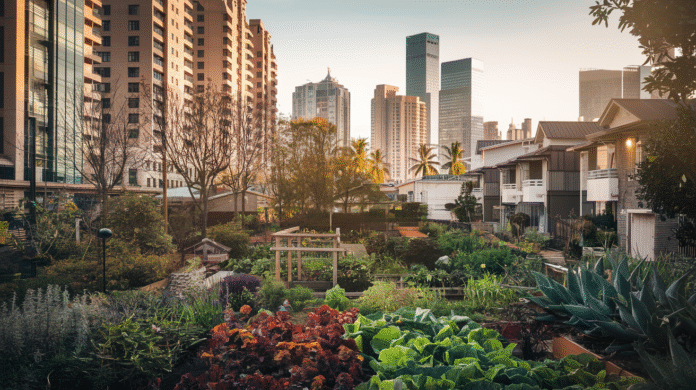Urban gardens are blossoming in cities, sparking debates on sustainability and social equity. As green spaces proliferate, their impact on communities and gentrification is under scrutiny.
The Transformative Power of Urban Gardening
Urban gardening is reshaping city landscapes, fostering a sense of community, and promoting sustainability. These initiatives often emerge in neglected spaces, where local residents cultivate their own food, share resources, and create a vibrant cultural hub. However, the rapid rise of these gardens raises questions about their role in gentrification. Are they genuinely revitalising communities or simply paving the way for wealthier residents to move in?
The significance of urban gardens has never been more pronounced. As cities grapple with the dual challenges of climate change and social inequality, these spaces represent a grassroots response. They provide fresh produce to communities that often lack access to healthy food options, while also fostering social connections among diverse residents. However, their increasing popularity can lead to unintended consequences, such as rising property values and displacement of long-term locals.
Statistics reveal a stark reality: cities like Berlin have seen a 30% increase in property prices adjacent to popular community gardens. This phenomenon raises an important question: can we balance the benefits of green spaces with the risk of creating elitist enclaves? The answer lies in the ongoing dialogue between urban planners, community leaders, and residents.
Ways Urban Gardening Impacts Your Life
Engaging with urban gardening can yield immediate benefits for your well-being. Those who participate often report reduced stress levels, increased physical activity, and a greater sense of belonging. Imagine cultivating your own herbs or vegetables, knowing that each harvest contributes to your health and the environment. These gardens transform not just spaces, but lives, enriching local culture and promoting a collective identity.
However, the landscape of urban gardening is not without its challenges. As these initiatives gain traction, disparities emerge between those who can afford to engage and those who cannot. Wealthier individuals and organisations often dominate the ownership and management of community gardens, which can marginalise lower-income residents. According to recent studies, 70% of urban garden participants belong to higher-income brackets, highlighting the need for more inclusive practices.
The Trends Shaping Urban Gardening’s Future
Emerging trends indicate a shift towards inclusive gardening practices, where communities actively involve all residents, regardless of socio-economic status. This can be achieved through workshops, collaborative projects, and equitable resource sharing.
Key actions for fostering a more equitable gardening movement include advocating for public funding for community gardens, establishing partnerships with local businesses, and creating educational programs that emphasise sustainability and inclusivity.
As urban gardening continues to flourish, it invites everyone to partake in its bounty. The challenge remains: how can we cultivate not only gardens but also a sense of community that uplifts everyone, ensuring that no one gets left behind in the pursuit of greener cities?


